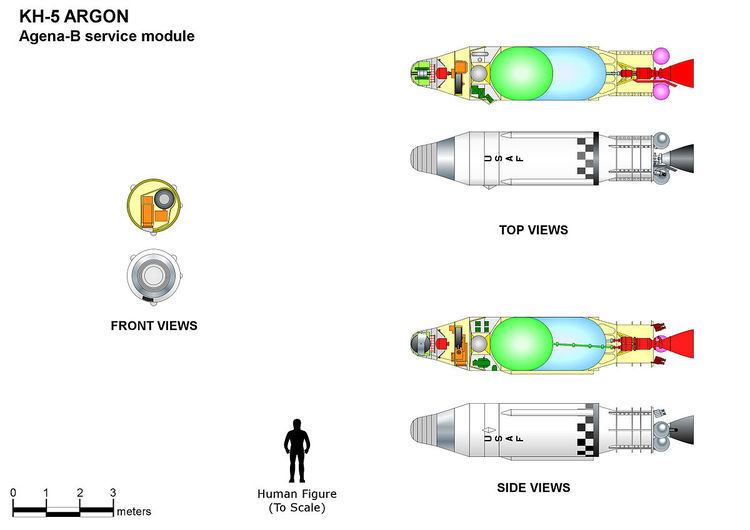Operator NRO | ||
 | ||
Applications ReconnaissanceGeodetic mapping Launch mass 1,274 kilograms (2,809 lb) | ||
KH-5 ARGON was a series of reconnaissance satellites produced by the United States from February 1961 to August 1964. The KH-5 operated similarly to the Corona series of satellites, as it ejected a canister of photographic film. At least 12 missions were attempted, but at least 7 resulted in failure. The satellite was manufactured by Lockheed. Launches used Thor-Agena rockets flying from Vandenberg Air Force Base, with the payload being integrated into the Agena.
Payload
Different versions of the satellite varied in mass from 1150 kilograms to 1500 kg. At least two missions deployed ELINT subsatellites. Ground resolution for the satellite was 140 meters, with a swath of 556 km. The onboard camera had a focal length of 76 mm. The purpose of the system, which produced relatively low-resolution images compared to other spy satellites, was to provide imagery for mapmaking purposes. This was one of the tasks that had originally been planned for the Samos series of satellites equipped with the (quickly cancelled) "E-4" cameras. Each satellite took photographs for less than a week before returning its film.
The satellite was in use during the same period as the KH-2-KH-4A Corona and the KH-6 Lanyard satellites. Later satellites were the KH-4B and KH-7. Images from three of the successful missions returned the first images of Antarctica from space.
